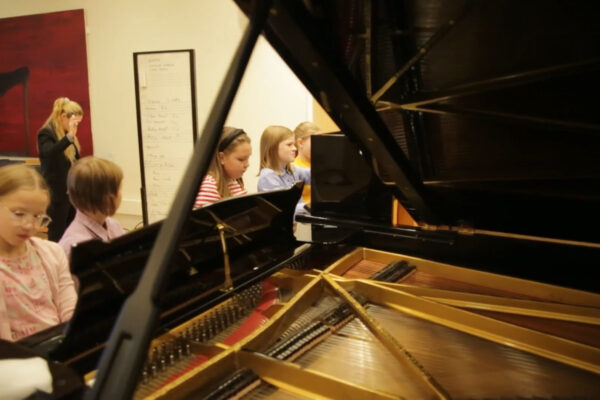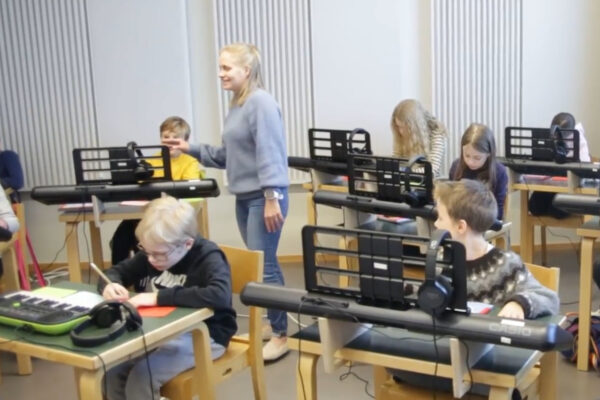
How can one elaborate this exercise?
This exercise has potential for many elaborations, for example one could add a subdominant chord to have a third primary chord included. Also the melody could be varied and improved or the exercise could even end up into composing a completely different song. The students have all invented their own different rhythms which we could use and then choose a new melody using the chord notes.
The fun comes with a prize
From the very beginning my aim is to teach in a practical way, of course I may have not always succeeded in it, but it’s a very clear thought guiding all my teaching. The student must know why he/she is attending musical theory lessons. Still we have had that conversation many times with the students but that’s also very nice and interesting. To have such interesting and funny lessons where everyone comes running wanting to learn new things is also not that easy for me, because there is a big amount of work behind all that! I use a lot of time for preparations and planning.
Other variation tips
This exercise can work also for other kind of groups if the teacher has the possibility to vary it according to his/her needs or possibilities. It’s possible for example to assign the rhythm to one student and not to everyone, or even limit the use of time values to make it simpler.
The exercise step by step
Now we will sing you a song called Sirkusparaati, I have written the lyrics and melody on the board and this song is familiar to the students.
- We revisit all the rhythms and time values of the song and check the time signature.
- The used time values are the basic minim, 4th-note and 8th-note.
- We add a few more values; a 16th-note and a 4th-note rest to make it more interesting.
- I have given all the students four different-colored blank A4 sheets.
- The assignment is to invent a different rhythm on every sheet using only the time values given before.
- The time signature for each sheet is 4/4.
- I always move around the classroom checking the results and usually they all give it their best and only rarely someone fills the sheet with four 4th-notes.
- Then I ask them to add a few musical terms and write them down at least on two sheets.
- After finishing the rhythms they can put the sheets in the order of their own choosing and learn to read the whole thing from the beginning to the end (four bars in total) with rhythm names, independently.
- After that we read them all together, and since everyone has a different rhythm it already sounds fun.
- Then we read the whole thing using including also body percussion and it’s already quite challenging at that point.
- Then we go through tonic and dominant together, this song is in D major, so we revisit D major and A major triads.
- Then we place the chords into the song in their right places; I would’ve like them to listen which chord goes where but unfortunately we didn’t have enough time for that.
- After placing the chords in their places the students wrote the chord symbol down on their rhythm sheets.
- Then they were assigned to choose a note (from the keyboard) to play the rhythm.
- In this case I advised them to use only the root notes d or a, but it could also be any not from the triad.
- Everyone has a keyboard in front of them so they were able to practice their rhythm with the root note, on three sheets the chord was D major (tonic) and on one sheet A major (dominant). Then we played and sang it all together!
Teacher: Silja Hurtig-Veteläinen, Lapland Music Institute
Silja Hurtig-Veteläinen is mother of three children and music theory and perception teacher at Lapland Music Institute. She graduated from Sibelius Academy in 2010 in music theory. She also studied violin and piano, composition and choir conducting. Her pedagogical principals hold music and students’ independence in limelight. She gets inspired by students who continuously learn new things in the amazing world of music.
Download exercise PDF here:
Exercise Creative Music Theory lesson
Download the Finnish song Sirkuskulkue here:





